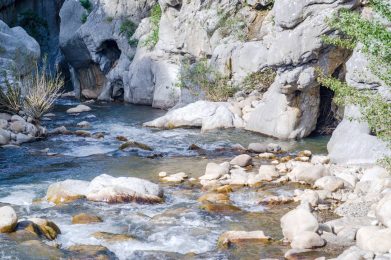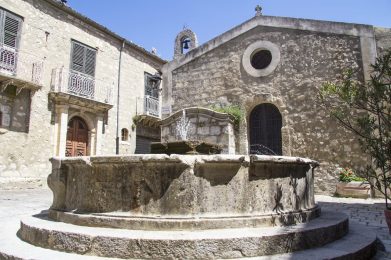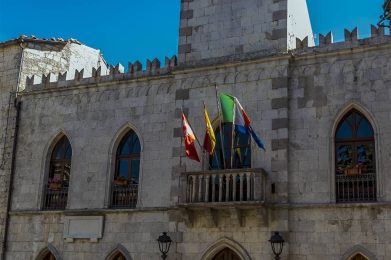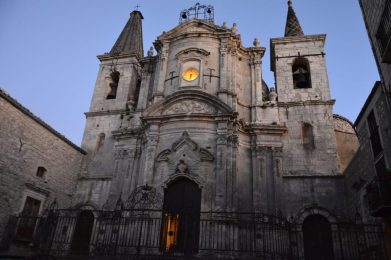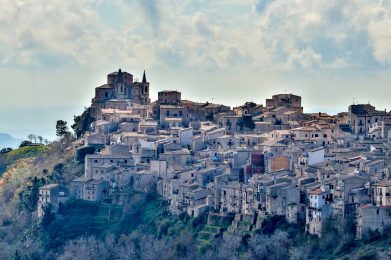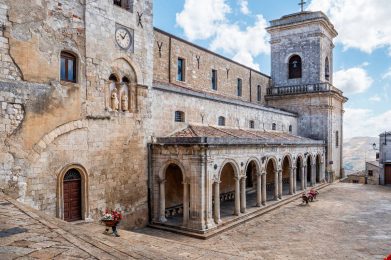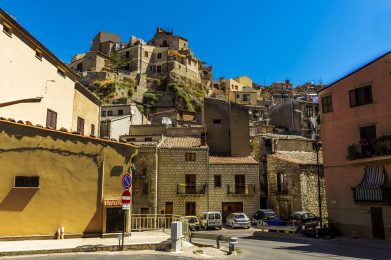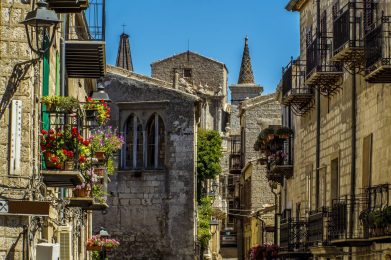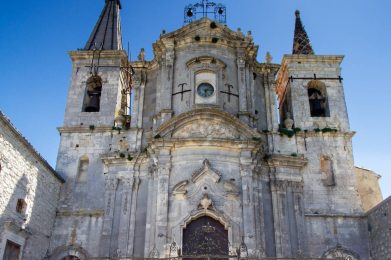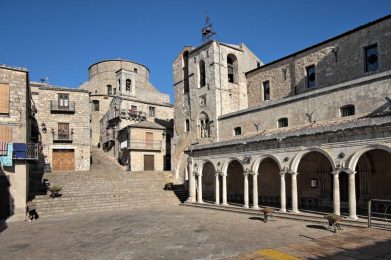Among the most beautiful villages in Italy there is one that is located at an altitude of 1657 meters in the heart of the Madonie Natural Park: it is Petralia Soprana, a village perched on a side of the Sicilian mountains 111 km from Palermo, surrounded by pastures, tree crops, Mediterranean scrub, forests and crossed by the Salso river.
From afar the houses of Petralia Soprana seem completely incorporated into the rock, but in fact, when you enter this medieval village, you can see elegant stone decorations, portals well finished and refined gates: still today Petralia Soprana enjoys the ancient art of blacksmiths, woodcarvers and sculptors, whose stores still dot the historic center.
Immagini del borgo
Discovering the ancient Petra Sicana
The history of Petralia Soprana begins at least in III B.C.: Diodoro Siculo narrates that after the First Punic War, the ancient Petra Sicana was given to the Romans Aulo Atilio Calatino and Gneo Cornelio, becoming the granary of Rome. Dominated by Byzantines, Vandals, Normans and Islamic, the village was improved especially during the feudal period, in particular with the Altavilla, Ventimiglia, Moncada and Alvarez de Toledo.
The name of the Sicilian village, called by the Arabs Betraliah, derives from Petra Heliae, as the Normans called it in reference to the Order of Discalced Carmelites founded by the prophet Elias. The addition Soprana occurred during feudalism to distinguish it from Petralia Sottana, located further downstream.
In the city coat of arms, appear the thistle of Madonie and a castle: Petralia Soprana, in fact, had in the past two castles, one of which has become little more than a ruin while the other is the beautiful Church of San Lorenzo, overlooking the square of the same name and a stone’s throw from one of the belvederes of the village overlooking the Madonie and, on clear days, even Etna.
The church stands on the ruins of a Saracen fortress and was founded by the Discalced Carmelites: in addition to the eighteenth-century late-baroque facade you can admire paintings of the ‘600, a diptych sculpture of Filippo Quattrocchi and a wonderful marble altarpiece made by Giandomenico Gagini.
In Piazza Duomo overlooks the Church of Saints Peter and Paul, of which strike the two bell towers, one Norman fifteenth century and the other of the ‘700, connected by an elegant arcade supported by 18 columns. Inside is preserved one of the wooden crucifixes made in the seventeenth century by Friar Umile da Petralia: it amazes the incredible realism of this work, of which you can see the entrails from the wound to the side, the thorns that pierce the eyebrow of Christ and the mouth ajar, beyond which are visible tongue and teeth.
The festival dedicated to the two Holy Apostles takes place at the end of June and consists of an evening procession and another, much more monumental, with a parade of 20 large statues.
The friar Umile da Petralia, to whom is also dedicated a small square in the village, started his novitiate in the convent adjacent to the Church of Santa Maria di Gesù, of which it is possible to appreciate the façade decorated by elegant bas-reliefs.
Not far from the convent there is one of the most beautiful baroque villas of Madonie, Villa Sgadari.
The historical and naturalistic beauties of Petralia Soprana and surroundings
The beating heart of Petralia Soprana is certainly Piazza del Popolo, in the center of which there is a bronze monument in memory of the soldiers who perished in all wars: all around there are the medieval battlements of the Town Hall, the baroque monastic style of the Church of the College and above all the Palazzo Pottino.
The building dates back to 800 and is almost completely open to visitors, with period furniture, original furnishings and guides with period clothing that allow visitors to make an immersive experience in the past: in the Sala delle Feste, the most beautiful of the palace, even King Umberto II of Savoy was received.
To see are also the Church of the Holy Sacrament, which with its extravagant elliptical plan is a real uniqueness in Madonie, the Church of San Teodoro, whose bell tower is nothing but one of the towers of the ancient city walls and the Church of the Trinity: inside the latter, in addition to a baptismal font of 700, you can admire one of the most beautiful works of Gagini, an ancona composed of 23 panels narrating the life of Jesus Christ, as if it were a Spanish retablo but made of stone.
You cannot leave the village without having tasted its cuisine, whose protagonists are the two-colored Fagiolo Badda, ingredient of a tasty soup with pork rind and wild fennel and above all the ricotta with basilisk, a real specificity of the place flavored with a herb similar to wild fennel.
Visiting Petralia Soprana also allows you to discover the surrounding beauties, starting from the naturalistic beauties of the Natural Park of Madonie: to be seen in particular the Gole di Tiberio (Tiberius’ Gorges), a real canyon ploughed by the Pollina river which flows among white rocky walls which are almost 20 meters high. Then there are the Scopalacqua Waterfalls, located at a height of almost 1200 meters, are the highest of the natural park: the water flows between thick holly trees, while the top you can see the Osmunda Regalis, better known as water fern.
Not to be missed is a visit to the Salt Mine in Raffo, from which salt has been extracted at least since ‘300, representing one of the largest salt deposits in Europe in light of the 80 km of tunnels dug in the salt: the mines are now home to an impressive Museum of Contemporary Art in Salt with salt sculptures arranged in tunnels.
Municipality of Petralia Soprana
Province of Palermo
Sicily Region
Inhabitants: 3 153
Center Altitude: 1 147 m.s.l.m.
Protected natural areas:
Parco delle Madonie
the Municipality is part of:
Borghi più belli d’Italia
Municipality
Piazza del Popolo – Tel. 0921684111
BY CAR
- From Palermo: Highway A 19, Svincolo Irosa, SS 290 or A 19, Svincolo Tremonzelli, SS 120.
- From Catania: Highway A 19 – Svincolo Irosa – SS. 290 or A 19 Svincolo Resuttano, SS. 290.
BY TRAIN
- Nearest stations: Cefalù or Termini Imerese
BY AIR
- Airport of Catania
- Palermo Airport

